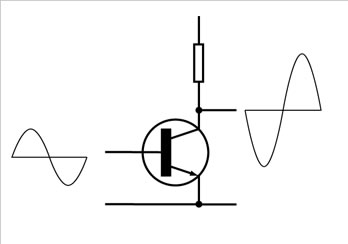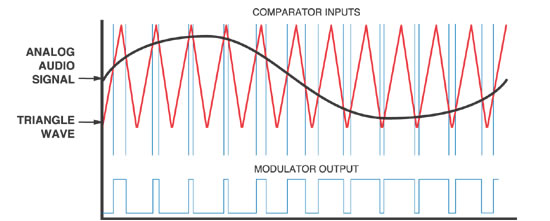- AccurateRip
- Acoustid
- AES/EBU
- AirPlay
- Amplifier
- aptX
- Audio file formats
- ASRC
- AVB
- Bit perfect jitter
- Bits: 16 or 24
- Bit perfect playback
- Bitrate
- Bluetooth
- Burn-in
- BWF
- Cables
- CDtext
- Chromecast
- Clipping
- Clock
- Codec
- Compression
- CRC
- Crossover
- Cue sheet
- DAC
- Damping
- DASH
- Digital
- Digital Room Correction
- Dither
- DLNA
- Drivers
- DoP
- DSP
- EBU R128 (loudness)
- FFT
- FireWire
- Freedb
- Gapless playback
- Generation loss
- HDMI
- Headphone listening
- Hearing
- Hires recording
- Homeplug
- I2S
- ID3
- Inter sample peak
- LDAC
- Linearity (DAC)
- Memory playback
- Music Server
- OCF
- OFC
- PCM
- Perception
- RAID
- ReplayGain
- Ripping
- RFI
- RIAA
- Router
- Sampling, up and over
- Sample Rate Conversion
- Speakers
- S/PDIF
- Storage
- Sync
- Tagging
- Toslink
- Transcoding
- UAA
- Units
- UPnP
- USB
- VST
- WiFi
- WiSA
Amplifiers
An amplifier does a couple of things.
It allows you to select a source, volume control, balance, etc. and amplifies the signal of the source. This is the functionality of a pre-amp.
The output of a pre-amp is unsuitable to drive a speaker.
The power amp has a fixed gain (most of the time 26 dB) and it amplifies the incoming signal.
The output is suit to drive a speaker.
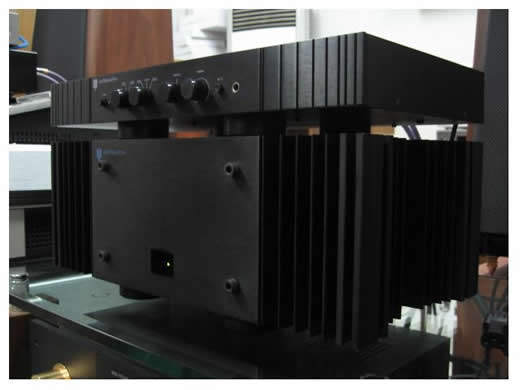
Audioanalyse pre- and power amp
Put a pre-amp and a power amp in one box and you have an integrated amp.
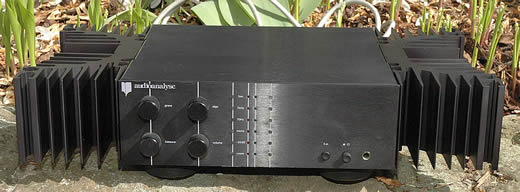 Audioanalyse PA90 integrated amp
Audioanalyse PA90 integrated amp
Some use a passive preamp.
A switch to select the source and an attenuator for volume control.
The plus is that you remove a whole box of electronics, improving the transparency.
The down side is that you miss an amplification stage making the signal a bit weak.
It can be too weak to drive the speakers properly.
A more modern setup is to use a DAC with volume control and a headphone out.
This combines DAC and pre-amp in one box.
Use active speakers (build in power amps with active crossover)
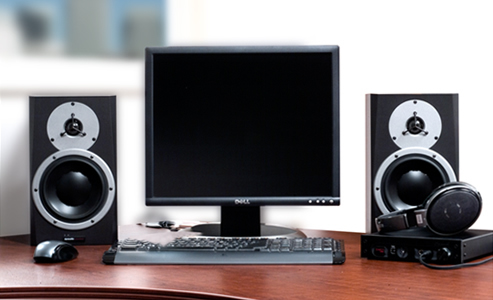
DAC and active speakers
The alphabet
Amplifiers are classified according to their design. In audio the classes A, B, AB, C and D are used.
The subject is very well covered here.
Class A
Class A is popular in the audiophile world.
It is a very simple design.
The idea is to drive a transistor (or a valve) at half power all the time.
Now you can amplify or attenuate using a single component.
As it runs at half power all of the time (even when not playing) its efficiency is close to zero with a theoretical maximum of 50%.
Class B
As a transistor can only amplify, let one do the “plus” part of the signal and another the “min” part. Combine the signals (push-pull) of both and you have your sine wave.
There will be some crossover distortion as 2 transistors will never be 100% the same but today these values are very low.
Class B has a maximum theoretical efficiency of 78.5%.
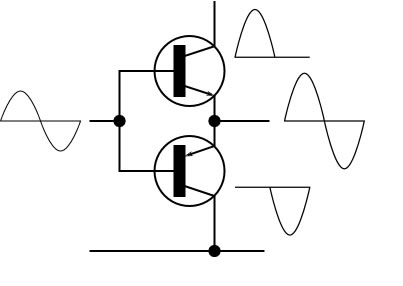
Class D
Class D compares the audio signal with a carrier wave, a triangle most of the time, to create pulses of varying length (Pulse Width Modulation).
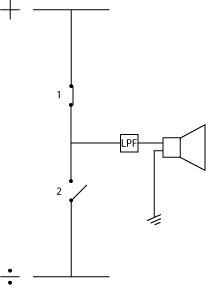
Lyngdorf explains the basic nicely
The longer switch 1 is "ON" (and switch 2 is "OFF") the longer the "positive" excursion of the loudspeaker will be and the longer switch 2 is "ON" (and switch 1 is "OFF") the longer the "negative" excursion will be. And if the two switches are on for the same period of time within one switching cycle there will be no excursion of the driver (no sound).

You can see it as switch mode power supply but now the frequency of the audio is used to modulate the output.
Class D has nothing to do with digital. It is amplitude modulation and indeed AM radio has nothing to do with digital.
The only “digital” aspect is that the FETs are either on or off. If they are off, no current flows so they don’t consume any power. If they are on, they are fully “open”. There is only a very small voltage drop so no heat is dissipated in the FET.
This is what makes Class D amps very efficient.
The ideal amp for portables.
The more power, the more efficient it becomes.

A modern Class D amplifier can deliver 320 Watt at 4 ohm in an almost Mac Mini size package. If global warming (or a low electricity bill) is your concern, these are the ones to go for.
Class D amplifiers are often build using OEM modules.
ICEpower by Bang & Olufsen
Direct Digital Feedback Amplifier (DDFA) by Zetex
UcD by Hypex
In 2011 Hypex introduced the Ncore, an improved class D design.
They claim it surpasses almost any linear amplifier.
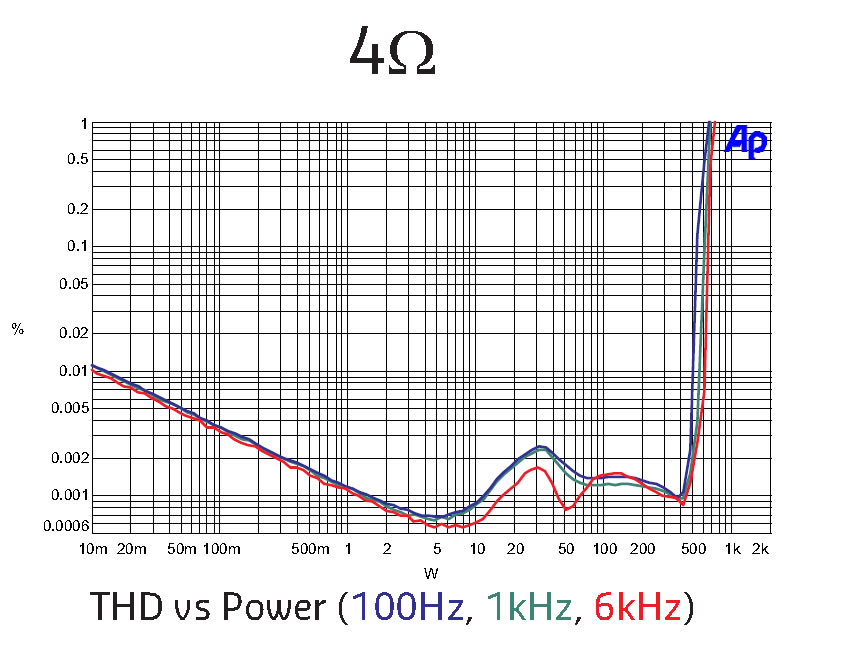
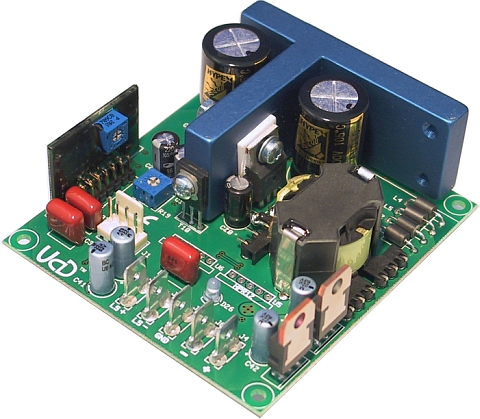
UcD400HG (400 Watt size:75*82*25 mm)
Digital amps
Most class D amps have analog inputs.
Maybe you do have analog sources but many people have digital sources only today.
The digital is converted by a DAC to analog and feed into the amp.
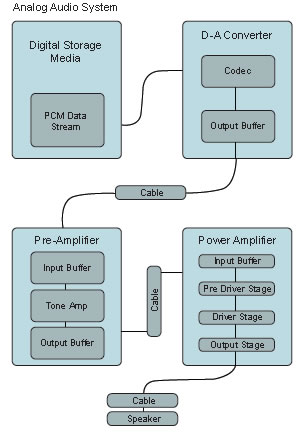
One can take things a step further. Don’t convert the digital PCM signal to analog but convert it to PWM and feed this into the Class D amp.
In this scenario, you stay as long as possible in the digital domain.
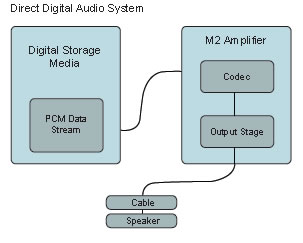
This is exactly what NAD (in corporation with Zetex) did with the M2 DIrect Digital Amplifier.
Antoher pioneer in this area is Lyngdorf.
Distortion
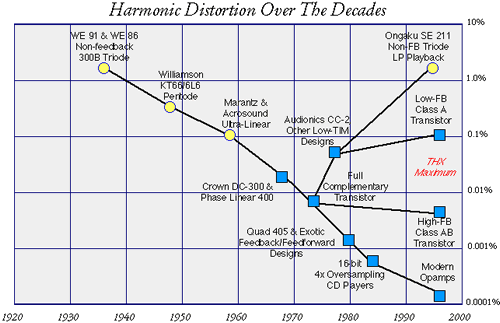
Source: Nutshell High Fidelity
Bi-amping
Many speakers have two pairs of binding posts, one for the woofer and one for the mid/high.
This allows you to drive the woofer and tweeter with separate amplifiers.
A much better solution is to drive each speaker with its own matched amplifier and do the crossover on the signal before it enters the power amps.
This allows for better filters than possible with passive components in the power part.
This is called an active crossover.
Many studio monitors (active speakers) are built this way.
Today this technology is coming to the home as well
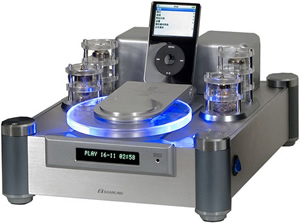
All amplifiers sound the same
A statement advocated by many today in the more critical audio forums.
Can a $500 solid state amp produce the same sound as a $12.000 valve amp?
Bob Carver claimed he was able to do so.
Read The Carver Challenge by J. Gordon Holt.
- Class D Amplifiers – Not 'Just Audio' - Steve Somers
- Advantages of ICEpower - ICEpower
- All amplifiers are analogue, but some amplifiers are more analogue than others - Bruno Putzeys et al.
- The Bits In-Between - An EE's Guide to Survival Between Microphone and Voice Coil - Bruno Putzeys


